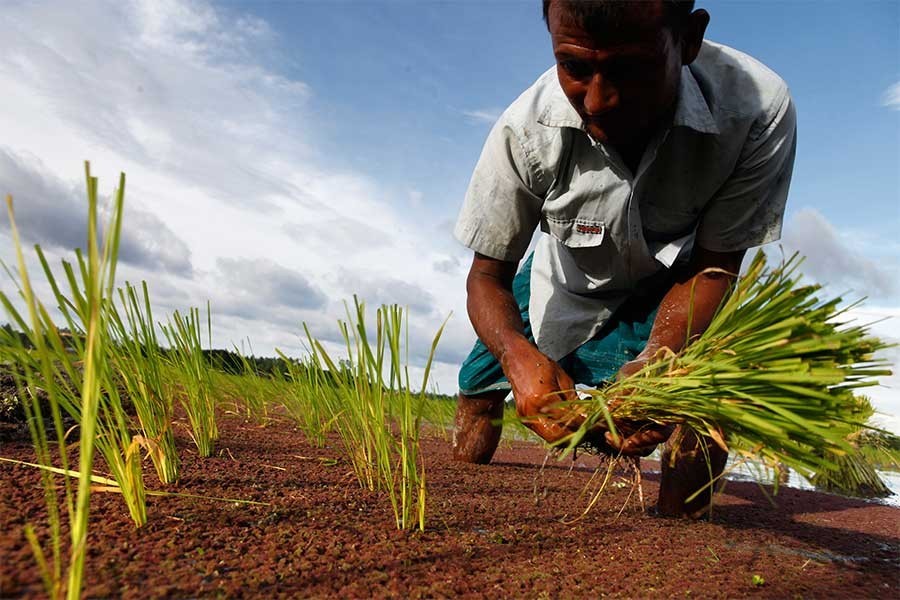Despite the not-so-inspiring scenario of the country's farm sector, the increase in farm loan disbursement is no doubt reassuring. With the industrial sector shying away to take bank credits, it is the agro-based farm sector that has lately emerged as a potential loan recipient. Although many banks are reportedly suffering from liquidity crisis, farm loan disbursement by the scheduled banks increased since March and continued through April and the current month. Clearly, the banks have done a good job, and it is expected that the loan disbursement target set by the central bank would be fulfilled in the remaining period of the financial year.
Reports quoting Bangladesh Bank sources say that disbursement of farm loans by the scheduled banks increased by 3.18 per cent or Tk 5.72 billion in July-April of the current fiscal (2018-19) compared with that in the same period of the last fiscal. The increase, though small, suggests that the farm sector is in a position to gain the all important trust of the banks despite the sluggish market price of many agro products, particularly paddy, jute and potato. The scheduled banks have disbursed Tk 185.25 billion in loans to the farmers in this period which is close to fulfilling the annual farm loan disbursement target.
Credit crunch has been an essential feature of the country's farm sector. Financing the farm sector barely surfaced on the agenda of the banks. Preoccupied mostly with the idea of credit worthiness, commercial banks considered it prudent to invest in prospective trading ventures and quickly return-worthy manufacturing sectors. The situation has considerably changed thanks to the initiative of the central bank in setting out guidelines for banks to follow. However, there remain a few irritants that must be addressed to make farm loans really beneficial to the recipients. It has been learnt that although banks are disbursing loans at a rate of interest of 10-11 per cent, not all recipients get their loans at these rates. As some banks prefer to release loans through NGOs and cooperative societies, the ultimate interest rate for the farmers soars much higher, to unaffordable levels. Such practice, believed to be widely prevalent in many areas, must be curbed with strict regulatory control. It is felt that because of the high rates due to disbursement of loans through NGOs and other intermediaries, actual recipients find it difficult to repay on time causing loan default. Some relaxation has recently been made by the central bank to allow rescheduling of short tern outstanding loans without down payment. However, to ensure that repayment is eased, disbursement process needs to be more transparent, user-friendly and affordable. Bringing the interest rate to one digit level could prove highly rewarding for the recipients.
There is also the need to identify some priority sub-sectors by the central bank in consultation with relevant ministries to ensure that loans are better targeted and reached out in a desirable manner. Observers feel that there has to be sufficient information/data available with banks to identify such priority areas for loans.


